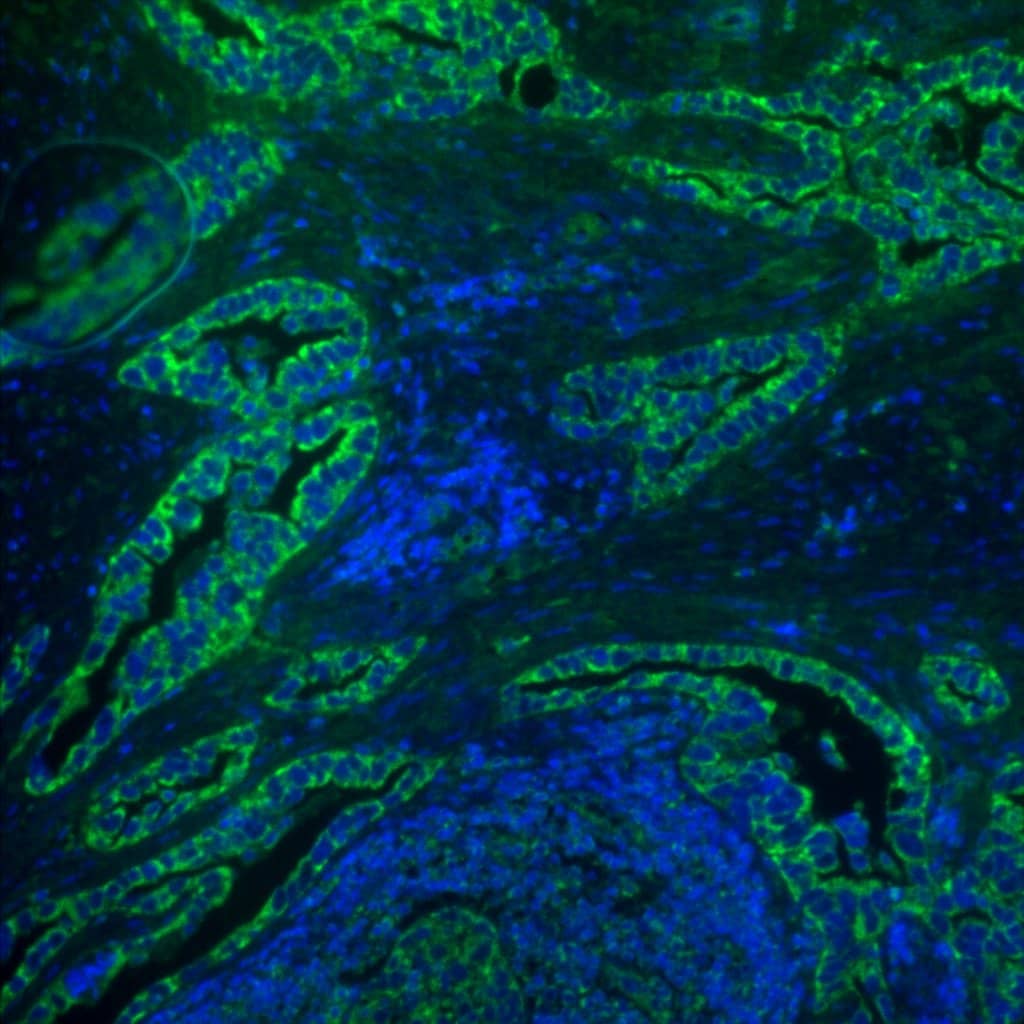| Immunogen | Partial recombinant human c-Met protein (between amino acids 170-400) [UniProt P08581]. |
| Localization | Transmembrane Protein with Extracellular, Helical and Cytoplasmic Domains |
| Predicted Species | Mouse (90%), Rat (90%), Porcine (92%), Bovine (91%), Rabbit (90%), Feline (92%), Canine (92%), Sheep (91%), Primate (100%), Equine (91%). Backed by our 100% Guarantee. |
| Isotype | IgG1 Kappa |
| Clonality | Monoclonal |
| Host | Mouse |
| Gene | MET |
| Purity | Protein G purified |
| Innovator's Reward | Test in a species/application not listed above to receive a full credit towards a future purchase. |
| Dilutions |
|
|
| Application Notes | There have been variable results with this antibody in Western blot. |
|
| Reviewed Applications |
|
|
| Publications |
|
| Storage | Store at 4C short term. Aliquot and store at -20C long term. Avoid freeze-thaw cycles. |
| Buffer | PBS |
| Preservative | 0.02% Sodium Azide |
| Concentration | 1.0 mg/ml |
| Purity | Protein G purified |
| Publications using NBP2-44306 | Applications | Species |
|---|---|---|
| Karabacak N, Zheng Y, Dubash T, et al. Single cell proteomics of tumor compartments identifies differential kinase activities defining sensitivity to mTOR-PI3-kinase inhibition bioRxiv 2021-01-10 (Mouse) | Mouse | |
| Morgan RD, Ferreras C, Peset I et al. c-MET/VEGFR-2 co-localisation impacts on survival following bevacizumab therapy in epithelial ovarian cancer: an exploratory biomarker study of the phase 3 ICON7 trial BMC medicine 2022-02-11 [PMID: 35144591] (IHC-P, Human) | IHC-P | Human |
| Karabacak NM, Zheng Y, Dubash TD et al. Differential kinase activity across prostate tumor compartments defines sensitivity to target inhibition Cancer research 2022-01-19 [PMID: 35045985] |
| Images | Ratings | Applications | Species | Date | Details | ||||||
|---|---|---|---|---|---|---|---|---|---|---|---|

Enlarge |
reviewed by:
Cristina Ferreras |
IF | Human | 02/12/2016 |
Summary
|
Secondary Antibodies |
Isotype Controls |
Research Areas for HGFR/c-MET Antibody (NBP2-44306)Find related products by research area.
|
The concentration calculator allows you to quickly calculate the volume, mass or concentration of your vial. Simply enter your mass, volume, or concentration values for your reagent and the calculator will determine the rest.